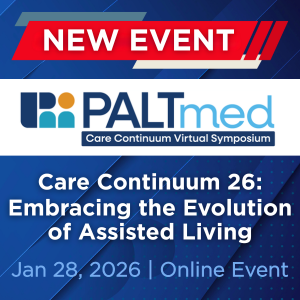Clinical Practice Guidelines (CPG)
Showing 51 - 57 of 57 results
Practice Management Tools
Synopsis of Federal Regulations in the Nursing Facility: Implications for Attending Physicians and Medical Directors
Synopsis of Federal Regulations in the Nursing Facility: Implications for Attending Physicians and Medical Directors is an indispensable resource tool for medical directors, attending physicians, and other post-acute and long-term care practitioners. The Synopsis of Federal Regulations contains summary cha...
Long Term Care Information Series
The Younger Adult in the Long-Term Care Setting
Long-term care (LTC) is no longer synonymous with "geriatric care." In the past 10 years, adults ages 31 to 64 have been the fastest growing population in nursing homes. The last national nursing home survey sponsored by the Centers for Disease Control and Prevention (CDC) in 2008 estimated that ...
Practice Management Tools
Tool Kit for Managing Attending Physicians in Post-Acute and Long-Term Care
This kit addresses a range of needs from a basic level of acknowledgement to the structured level of a formal application for professional services. It will assist the facility and medical director with verifying qualifications of each attending physician who wishes to serve on staff and make a decision to...
Clinical Practice Guidelines (CPG)
Transitions of Care CPG
Transitions of care involves the movement of a patient between care settings and the transfer of information with them to facilitate a seamless continuum of care and to enable patients’ wishes to be followed - no matter where in the continuum of care they are. This is an important issue, as care for today’...
Clinical Practice Guidelines (CPG)
Urinary Incontinence CPG
Urinary incontinence is one of the most common conditions among residents of post-acute and long-term care (PALTC) facilities, affecting about 55% of all such residents. The prevalence of urinary incontinence increases with age. Women are affected more than men. Although urinary incontinence is increasingl...
CPG Pocket Guides


